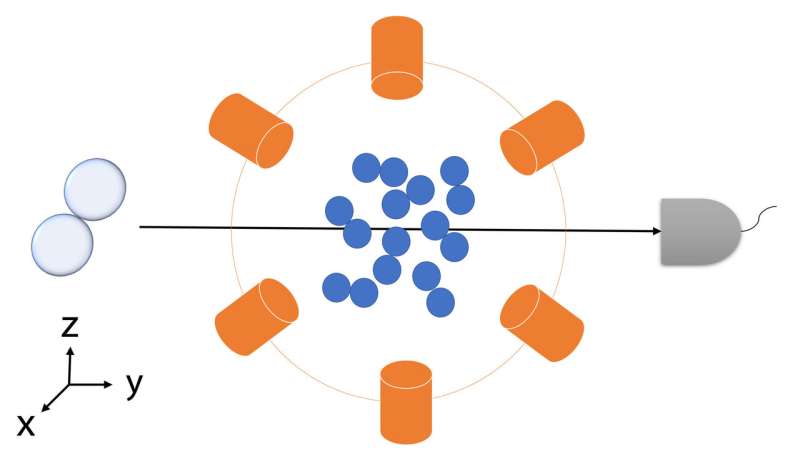Quantum entanglement in chemical reactions? Now there's a way to find out

Scientists have long suspected that a quantum phenomenon might play a role in photosynthesis and other chemical reactions of nature, but don't know for sure because such a phenomenon is so difficult to identify.
Purdue University researchers have demonstrated a new way to measure the phenomenon of entanglement in chemical reactions—the ability of quantum particles to maintain a special correlation with each other over a large distance.
Uncovering exactly how chemical reactions work could bring ways to mimic or recreate them in new technologies, such as for designing better solar energy systems.
The study, published on Friday (Aug. 2) in Science Advances, generalizes a popular theorem called "Bell's inequality" to identify entanglement in chemical reactions. In addition to theoretical arguments, the researchers also validated the generalized inequality through a quantum simulation.
"No one has experimentally shown entanglement in chemical reactions yet because we haven't had a way to measure it. For the first time, we have a practical way to measure it," said Sabre Kais, a professor of chemistry at Purdue. "The question now is, can we use entanglement to our advantage to predict and control the outcome of chemical reactions?"
Since 1964, Bell's inequality has been widely validated and serves as a go-to test for identifying entanglement that can be described with discrete measurements, such as measuring the orientation of the spin of a quantum particle and then determining if that measurement is correlated with another particle's spin. If a system violates the inequality, then entanglement exists.
But describing entanglement in chemical reactions requires continuous measurements, such as the various angles of beams that scatter the reactants and force them to contact and transform into products. How the inputs are prepared determines the outputs of a chemical reaction.
Kais' team generalized Bell's inequality to include continuous measurements in chemical reactions. Previously, the theorem had been generalized to continuous measurements in photonic systems.
The team tested the generalized Bell's inequality in a quantum simulation of a chemical reaction yielding the molecule deuterium hydride, building off of an experiment by Stanford University researchers that aimed to study the quantum states of molecular interactions, published in 2018 in Nature Chemistry.
Because the simulations validated the Bells's theorem and showed that entanglement can be classified in chemical reactions, Kais' team proposes to further test the method on deuterium hydride in an experiment.
"We don't yet know what outputs we can control by taking advantage of entanglement in a chemical reaction—just that these outputs will be different," Kais said. "Making entanglement measurable in these systems is an important first step."
More information: "Entanglement classifier in chemical reactions" Science Advances (2019). DOI: 10.1126/sciadv.aax5283 , advances.sciencemag.org/content/5/8/eaax5283
Journal information: Science Advances , Nature Chemistry
Provided by Purdue University




















